It's a Wonderful Life (1946)
Directed by: Frank Capra
Written by: Albert Hackett, Frank Capra, Jo Swerling, Philip Van Doren Stern
Starring: Donna Reed, Henry Travers, James Stewart, Lionel Barrymor
USA
AVAILABLE ON BLU-RAY AND DVD
RUNNING TIME: 130 mins
REVIEWED BY: Dr Lenera, Official HCF Critic
On Christmas Eve 1945, in Bedford Falls, New York, George Bailey contemplates suicide. Prayers for him reach heaven, where Clarence Odbody, Angel 2nd class, is assigned to save George, in return for which he will earn his wings. To prepare him for his mission, Clarence is shown flashbacks of George’s life, which tell a story of a person who’s spent his life giving himself to the people of Bedford Falls, even though what he really wants to do is travel the world. Rich skinflint Mr. Potter is trying to take over the entire town, all that’s preventing him from doing so being the family building and loan company. Then one day Potter finds and hides some misplaced money and George believes that everybody else will be better off without him.…
They may as well have called it It’s A Miserable Life. Partly a sort of Christmas Carol in reverse, this much loved Christmas classic [that only slightly takes place during Christmas] is often described, and even on the back on my DVD, as one of the ultimate feel good movies, reminding us of the value of one life, how much we touch the lives of others, and how nobody who has friends is a failure. Uplifting and I guess truthful messages definitely, but I’ve personally never felt very joyful and positive after seeing the film, and I’ve seen it often. Each time I sit down to watch it, it seems to be ever more ambiguous, ever more troubling, and dare I say it ever more depressing. It may have some nice things to say, but it’s also in part a hugely pessimistic look at human existence that rams home the point that so many of us will have our lives dictated by compromise, and will never achieve what we want unless we have the strength to break away. The tale of George Bailey isn’t a happy one, it’s a bitter, blackly comic tragedy in which he ends up trapped in a complacent, even dull existence, an existence that he doesn’t want. The high point of the film, where George is shown what the world would have been like if he hadn’t been born, brings with it so many questions that I could fill a whole page with them, while even the seemingly sweet romance in the film seemed to have its sour elements when I watched it this time around. All of which is of course part of its brilliance. I’m not sure that it entirely reconciles all its dark, bitter, questioning stuff with things like whimsical laughs involving an angel, but then nor am I sure if Frank Capra was entirely sure of the complexity of what he made, some of which may have been only subconsciously put on to the screen. He never publicly acknowledged it, instead tending to say things like he made the film as a statement against the rise of atheism.
It was based on the short story The Greatest Gift by Philip Van Doren Stern. He couldn’t get it published, so he made it into a Christmas card and posted two hundred copies to family and friends. RKO producer David Hempstead showed it to Cary Grant’s agent, and RKO bought the rights to the story, but it was then sold to Frank Capra’s production company Liberty Films which had a deal with RKO, along with three unsatisfactory scripts. The final screenplay was worked on by many including Capra himself and combined elements of all the previous scripts. The original ending had George reciting the Lord’s Prayer. James Stewart offered to play his role without even hearing the story. Jean Arthur was offered the role of Mary but had to turn it down for a prior commitment on Broadway, while Ginger Rogers refused it because she considered it “too bland”. Bedford Falls, which partly consisted of redressed sets originally designed for 1931’s Cimarron, was inspired by Seneca Falls, New York, which has an annual It’s a Wonderful Life festival, hotel and museum. Joseph Walker was the original cinematographer, while Joseph F. Biroc was the assistant. When Capra asked Walker to continue shooting as the sun went down, Walker refused. Capra then asked Biroc if he could shoot the scene, and Biroc replied, “I can”, causing Biroc to be promoted and Walker sacked. The film flopped though it did get win the Technical Achievement Oscar for the creation of a new kind of artificial snow that didn’t make a noise when walked on. Its elevation to the status of a beloved classic didn’t come until 1976 when it became a television staple. It was remade twice for TV in 1977 [It Happened One Christmas] and 2013 [The Christmas Spirit], while in 1990 another TV movie called Clarence starred Robert Carradine in a new tale of the helpful angel.
The first thing that we hear over shots of Bedford Falls are the prayers of various people for a guy named George Bailey who’s in some type of trouble. I’m reminded of something that I noticed the previous time I saw the film – one of the people whom we see in this montage is actually footage of George shown from a distance, but certainly isn’t supposed to be him, the shot looking like it was taken from the later scene where he says Merry Christmas to everyone. Therefore I wonder if this cheaply constructed series of shots was put together at the last minute and that the film originally played chronologically, Capra deciding that introducing the fantasy element would play better for viewers? Something to think about. Even I find it hard not to chuckle when, after an astonishing shot for the time where the camera rises up from the roof of a house [it must be first class matte work as it sure doesn’t look like a miniature], two constellations and a star talk to each other. But we’re soon totally involved in the story of George Bailey, especially when as a boy he first saves his brother Harry from drowning and then, in quite an intense and heartrending moment, intervenes to stop the local chemist from poisoning himself. The man physically attacks the poor boy who’s absolutely terrified of him before getting through to him the truth. The realism of this jars a bit with the introduction of Mr Potter, “the meanest man in town”. I sometimes wander why Capra or the other scriptwriters felt it necessary to put a “BOO HISS” villain into the story. A more likable bad guy may have fit better into the film and at least some of what Capra and the other screenwriters were trying to say. On the other hand, the American censors of the time clearly weren’t paying attention because Potter is never punished for his crimes, nor does he even repent.
Adult George is introduced wanting to buy a big suitcase for his travels, the film actually pausing so angel Clarence can get a good look at him. He wants to see the world, then go to college, and then go on to “build things, design new buildings, plan modern cities”, as he tells his father who soon dies of a stroke. But he postpones his traveling so he can sort out the family business, Bailey Brothers’ Building and Loan. Potter wishes to dissolve the Building and Loan to eliminate it as a competitor. The board of directors votes to keep it open, as long as George stays to run it. The Building and Loan partly exists to ensure that ordinary people can borrow enough money to buy themselves decent, affordable homes, rather than pay Potter’s extortionate market rents, so George gives his college tuition to Harry on the condition that Harry take over the Building and Loan when he graduates in four years time – but when he returns Harry’s newly married and tells him that he’s been offered a job from his father in law – which of course sap George tells him he should accept. He marries local girl Mary, but just as they set off for their honeymoon, they witness a run on the bank and use their $2000 honeymoon savings to keep the Building and Loan solvent. Then follows a scene which somehow manages to be both really sweet and rather cruel [or maybe it’s just me?]. George is driven to a run down house that he’s previously said that he wouldn’t want to live in even if he was a ghost – yet this is where Mary has bizarrely decided to set up house while he’s been busy sorting out the Building and Loan. As he enters, she’s put reminders of the places he wanted to go all over the place, which seems quite horrible to me, serving as reminders to George of where he’ll never go to because he’s so damn weak willed. If I was him I’d have walked out of the place there and then.
Uncle Billy losing a large sum of money causes things eventually go terribly wrong for George. It’s painful watching him beg Potter, whom he previously insulted when Pottter offered him a job in return for the Building and Loan, for financial help. The scene where he starts to break down in front of his family is brilliantly acted by James Stewart, in a film that begins with him in his usual light, slightly awkward “aw shucks” persona that he perfected up to this film but then has him turn into somebody much closer to the darker, tormented character type he would go on to play for Alfred Hitchcock and Anthony Mann before our very eyes. George decides to take the coward’s way out but Clarence saves his life by getting him to save his life, then sets out to show him what Bedford Falls would have been like without him. Capra publicly criticised the violence and immorality of the film noirs of the time, but this incredibly masterful passage of cinema manages to feel more noir than most noir, a Philip K. Dick world before Dick started writing. There’s something almost indescribably nightmarish about it, which makes it a shame that Capra never made a horror film. But as we spend time with George in this cold unfriendly, sleazy environment, the music score by Dmitri Tiomkin [who hated the way Capra messed around with it], previously reliant on popular songs, now becoming truly eerie, so many questions come to mind. Having Mary be an “old maid” because George was never around [she was married to someone else in the short story] undeniably presents a sexist, dated attitude, but what if Clarence is deliberately skewing ‘Pottersville’ so that it deliberately hits George’s where it may hurt most – his ego? And I sometimes get the feeling that Clarence is presenting the world as it actually is, rather than Capra’s idealised version of how it should be.
So many thoughts are conjured up by this film, and yet it still scores with its simple, warm-heated comedy [the drunken Uncle Billy bumping into something off screen is even funnier when you know that actor Thomas Mitchell accidentally bumped into equipment and ad-libbed “I’m all right, I’m all right”] and lovely moments of romance despite the overall cynicism of parts of the George/Mary relationship. There’s the scene where Mary loses her bathrobe and George ends up talking to the shrubbery and thinking how to turn the situation to his advantage. Then there’s the two suddenly overcome with passion while listening to someone else on the phone, which is conveyed as strongly as a 1946 film would allow – in fact the scene was shortened by the moral guardians who seemed to let some other little things go by. Mary and the other main female character in the film besides George’s mom Violet fall into archetypal good girl/bad girl [Gloria Grahame was rarely allowed to stretch] roles. Violet’s aghast reaction to George suggesting they spend a night outdoors is probably intended to convey that they’re incompatible, but I don’t think she would actually take much persuasion, clearly having the hots for George, and I wonder what would happen if he ended up with her rather than the boringly-perfect Mary. What with just the faintest bit of suggestion that George gives her some money because she’s in some sort of trouble [I wonder what that could be?], she’s one of several characters who seems to have full lives outside the scope of the film even though we’re only given tiny hints of details and have to fill in the rest for ourselves. This helps to make Bedford Falls seem like a properly lived in place [Capra also had dogs, cats and birds roaming the set] and most of its inhabitants seem like real people despite the fantasy stuff – yet Henry Travers as Clarence is one of the film’s great joys, you can’t help but love this simple, happy, kind creature. His childlike expressions during the scene where he and George are in a bar are unforgettable.
Capra keeps each scene very tight, his film having a surprising number of quick shots that fit in with modern sensibilities and which is probably one of many reasons why this is one old movie that continues to get more fans. And at last George mans up and changes his mind, everyone turns up to save the day, and a bell rings, meaning that Clarence is now an Angel, 1st class. It brings on tears of happiness as we contemplate how virtue is its own reward and the like. And yet it’s not really as happy as all that, because George is now imprisoned forever in this faintly boring town full of small-minded people with his faintly boring wife and his kids, when he could be fulfilling his dreams [an especially sad detail is the model bridge that George has obviously spent time designing which he destroys], perhaps with Violet at his side, perhaps not. After all, he probably deserves it considering that he’s spent much of the film helping other people achieve their’s. It’s A Wonderful Life clearly makes a lot of viewers feel very happy, and its emotion if fully justified. Certainly not the sentimental slush which some of its haters [yes, these people do exist] claim it to be, it’s also in its own way very tough. And it also makes us think deeply about our lives, and how so many of us let ourselves be held back from what we really want to do and therefore settle for living a lie. And that, I think, is the main reason why it touches a nerve in so many people, even if they’re not really aware of it. Then again, many truly great movies work on several levels, even sometimes subliminally, and this is certainly one of them.

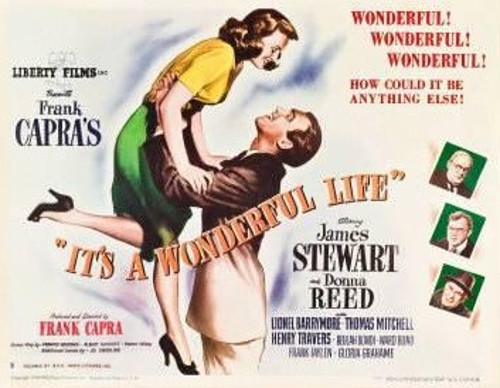
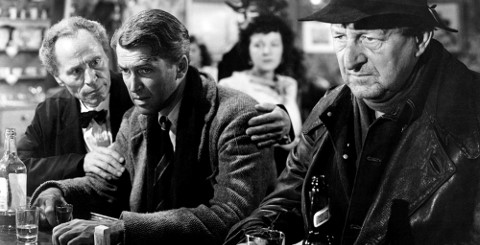
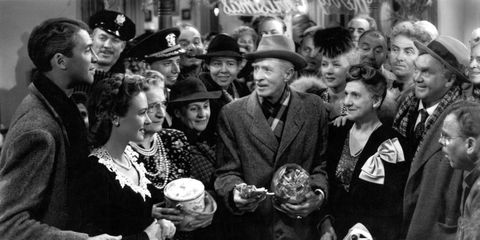



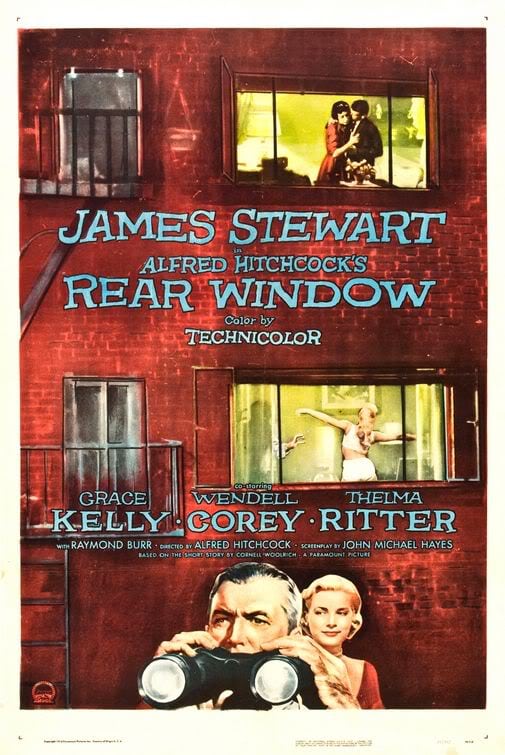
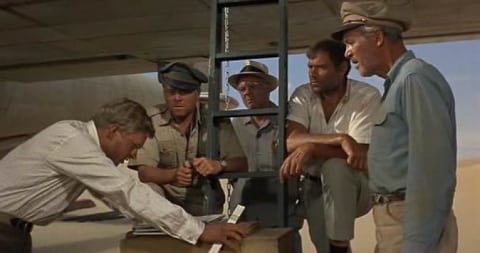

Be the first to comment